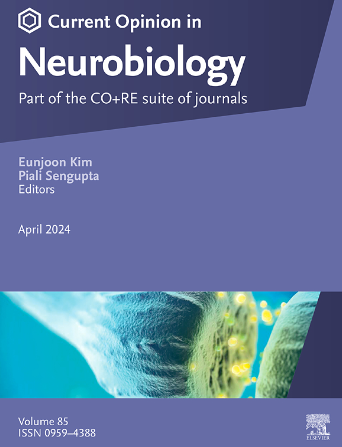Octopus as a comparative model for understanding the neural control of limb movement and limb-based behaviors
IF 5.2
2区 医学
Q1 NEUROSCIENCES
引用次数: 0
Abstract
Octopuses provide a model system for examining the neural control of limbs. Octopus arms serve in a wide range of limb functions, but their arms' neural anatomy, muscle, and connective tissue structures are strikingly different from those of other model taxa, arthropods, and vertebrates. Unlike those groups, octopus arms contain true nerve cords with diverse neuron populations. Nerve cords of different arms connect to one another at their bases. For the arms’ large axial nerve cord, signals pass from one arm to other arms through a connecting nerve ring. While the connection of the arm nervous system to the brain is necessary for behaviors such as locomotion; arm movements can be triggered with naturalistic mechanosensory input to an arm. What we know about biological systems shapes our imagination of the possible; understanding the octopus arm neural control expands how we conceive of limb systems operating in animals and inspires engineered devices.
章鱼作为理解肢体运动和肢体行为的神经控制的比较模型
章鱼为研究四肢的神经控制提供了一个模型系统。章鱼的腕足有着广泛的肢体功能,但它们腕足的神经解剖结构、肌肉和结缔组织结构与其他模式类群、节肢动物和脊椎动物有着显著的不同。与这些群体不同的是,章鱼臂上有真正的神经索,有着不同的神经元群。不同手臂的神经索在它们的基部相互连接。对于手臂的大轴神经索,信号通过连接的神经环从一只手臂传递到另一只手臂。虽然手臂神经系统与大脑的连接对于运动等行为是必要的;手臂的运动可以由自然的机械感官输入触发。我们对生物系统的了解塑造了我们对可能性的想象;了解章鱼手臂的神经控制扩展了我们对动物肢体系统运作的理解,并激发了工程设备的灵感。
本文章由计算机程序翻译,如有差异,请以英文原文为准。
求助全文
约1分钟内获得全文
求助全文
来源期刊

Current Opinion in Neurobiology
医学-神经科学
CiteScore
11.10
自引率
1.80%
发文量
130
审稿时长
4-8 weeks
期刊介绍:
Current Opinion in Neurobiology publishes short annotated reviews by leading experts on recent developments in the field of neurobiology. These experts write short reviews describing recent discoveries in this field (in the past 2-5 years), as well as highlighting select individual papers of particular significance.
The journal is thus an important resource allowing researchers and educators to quickly gain an overview and rich understanding of complex and current issues in the field of Neurobiology. The journal takes a unique and valuable approach in focusing each special issue around a topic of scientific and/or societal interest, and then bringing together leading international experts studying that topic, embracing diverse methodologies and perspectives.
Journal Content: The journal consists of 6 issues per year, covering 8 recurring topics every other year in the following categories:
-Neurobiology of Disease-
Neurobiology of Behavior-
Cellular Neuroscience-
Systems Neuroscience-
Developmental Neuroscience-
Neurobiology of Learning and Plasticity-
Molecular Neuroscience-
Computational Neuroscience
 求助内容:
求助内容: 应助结果提醒方式:
应助结果提醒方式:


